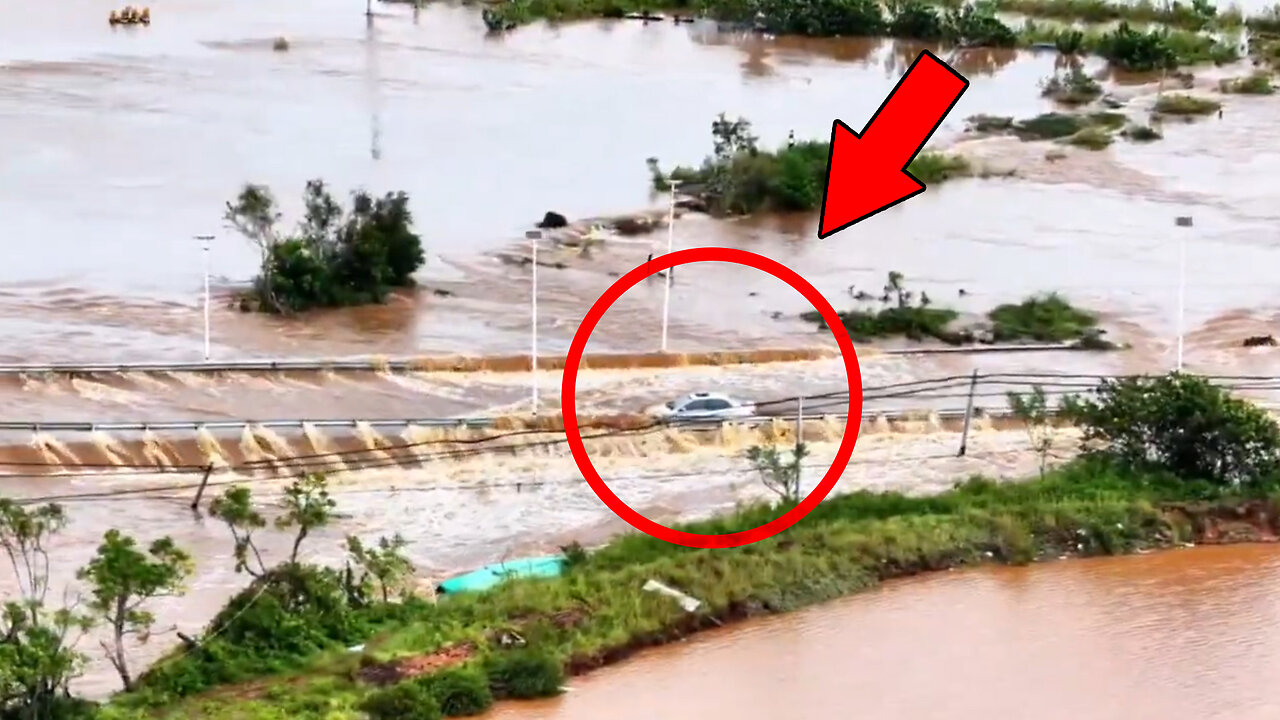Premium Only Content

Typhoon Matmo Slams China and Vietnam | Record Rains, Floods, and Landslides
Typhoon Matmo struck the southern provinces of China at the very beginning of October — right during the celebration of National Day and the Mid-Autumn Festival. These days traditionally mark the peak of the tourist season, when millions of Chinese citizens travel across the country, which severely complicated transportation and emergency operations.
By October 4th, the first and highest level of alert was declared on Hainan Island. In Haikou District and the city of Wenchang, ferry services, public transportation, and business operations were temporarily suspended; schools and shopping centers were closed. Haikou Meilan International Airport canceled all flights, and rail service across the island, including the high-speed loop line, was completely halted.
On the morning of October 5, Matmo reached the coast, bringing gusts of up to one hundred thirty-eight feet per second. The wind tore metal sheets from rooftops and uprooted trees. Authorities evacuated more than two hundred thousand people, placing them in temporary shelters. On the Haijian River, in the Meilan area, storm waves tore a steel cargo ship from its berth, sending it drifting toward a bridge. Thanks to the joint efforts of rescuers and maritime services, the vessel was secured and towed away.
By the evening of October 5th, the typhoon hit the southern mainland of China. In Zhanjiang District, Guangdong Province, gusts reached nearly one hundred eighty-seven feet per second, and in the Xuwen County area, more than seventeen and three-quarter inches of rainfall was recorded in just two days — an all-time high for the region.
Although Matmo gradually weakened as it moved inland, by October 6th, its residual circulation brought devastating floods and landslides to northern Vietnam. On three of the country’s rivers, water levels reached their highest in almost forty years.
In the city of Thai Nguyen, the Cau River overflowed its banks — the water level exceeded the previous record by more than three feet, turning streets into canals and submerging vehicles up to their roofs. Thousands of people were forced to abandon their homes. Social media filled with desperate pleas for help, as entire neighborhoods were left without electricity and food supplies. The provinces of Thai Nguyen, Cao Bang, and Lang Son were hit especially hard.
In Thai Nguyen, a massive sinkhole opened on National Highway three B, completely paralyzing traffic along this vital route. To supply the residents of flooded areas in Lang Son Province with water, food, and essential goods, three helicopters were dispatched, delivering over four and one-quarter tons of cargo.
At the Bac Khe-1 Hydroelectric Plant, a partial dam breach occurred — about sixteen and a half feet wide. Authorities immediately began evacuating residents of downstream villages.
Meanwhile, in Hanoi — where residents had only just finished cleaning up after Typhoon Bualoi — the new wave of the storm once again caused large-scale flooding. In some parts of the capital, rainfall reached up to thirteen and three-quarter inches.
Pumping stations in Hanoi operated at maximum capacity, draining water from ninety flooded districts. One local resident admitted that the situation feels like a vicious cycle: rain, flooding, a struggle for survival — and an increasing sense that this is becoming the new normal.
The disaster caused enormous damage to the country. Around seventeen thousand homes were submerged, and more than fifty-five thousand acres of rice and other crops were flooded. The water carried away over two hundred thousand head of livestock and poultry.
According to the Ministry of Environmental Protection, as of October eighth, eight people had died and five were reported missing due to floods and landslides.
Have you ever wondered why extreme rainfall events are becoming so frequent? Why does a typhoon, even after nearly dissipating, still bring enormous amounts of precipitation that trigger deadly floods?
There is one factor that often remains outside the scope of most scientific analyses — yet its impact on the Earth’s climate system, and the growing intensity of natural disasters, is colossal.
To learn more, watch the video “Why Turbulence Is on the Rise? Egon Cholakian on Atmospheric Anomalies and Nanoplastic Pollution.”
-
 LIVE
LIVE
AllatRa TV
13 days agoALLATRA TV LIVE 24/7
1 watching -
 LIVE
LIVE
Badlands Media
9 hours agoBadlands Daily: October 22, 2025
3,281 watching -
 LIVE
LIVE
Wendy Bell Radio
5 hours agoKing Of The Trolls
7,581 watching -
 14:00
14:00
It’s the Final Round
9 hours ago $0.11 earned💰NBA Best Bets🔥Player Prop Picks, Parlays, Predictions FREE Wednesday Today October 22nd 10/22
6.15K2 -
 LIVE
LIVE
LFA TV
12 hours agoLIVE & BREAKING NEWS! | WEDNESDAY 10/22/25
3,162 watching -
 1:00:40
1:00:40
Chad Prather
11 hours agoHow To Live An UNSHAKEABLE Life!
56.6K20 -
 1:55:28
1:55:28
The Chris Salcedo Show
14 hours ago $4.43 earnedDems Only Like Violence Directed At Conservatives
39K9 -
 1:54:17
1:54:17
Welcome to the Rebellion Podcast
14 hours ago $1.18 earnedHappy Hump Day - Welcome to the Rebellion Podcast Live 10/22
18.1K -
 8:29
8:29
Freedom Frontline
16 hours agoFox News Analyst EXPOSES Obama and Hillary’s Dirty Secret
31.1K21 -
 21:34
21:34
Jasmin Laine
19 hours agoReporters STUNNED as Carney’s “No Deal Coming” LEAKS—Billboards EXPLODE Nationwide
34.7K36